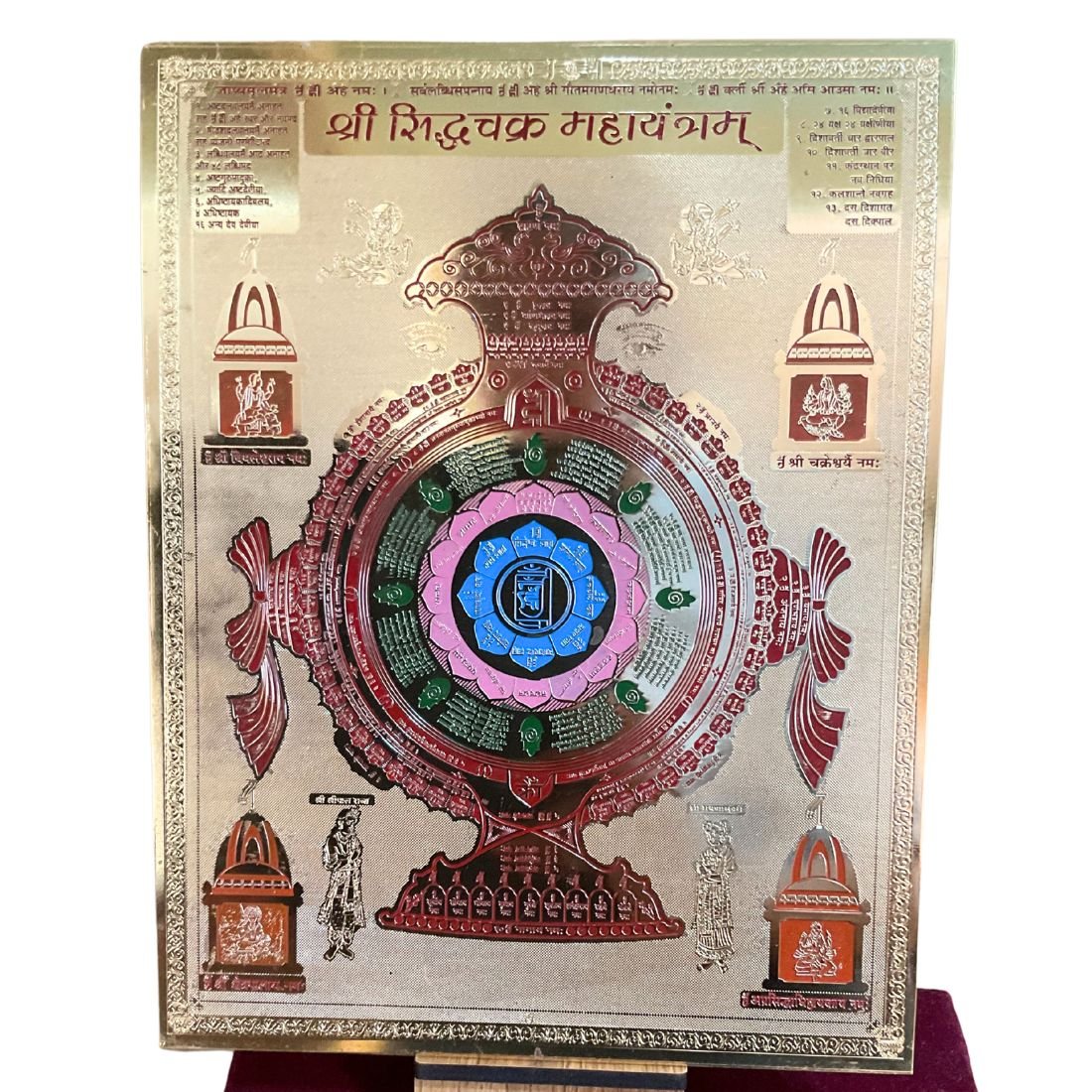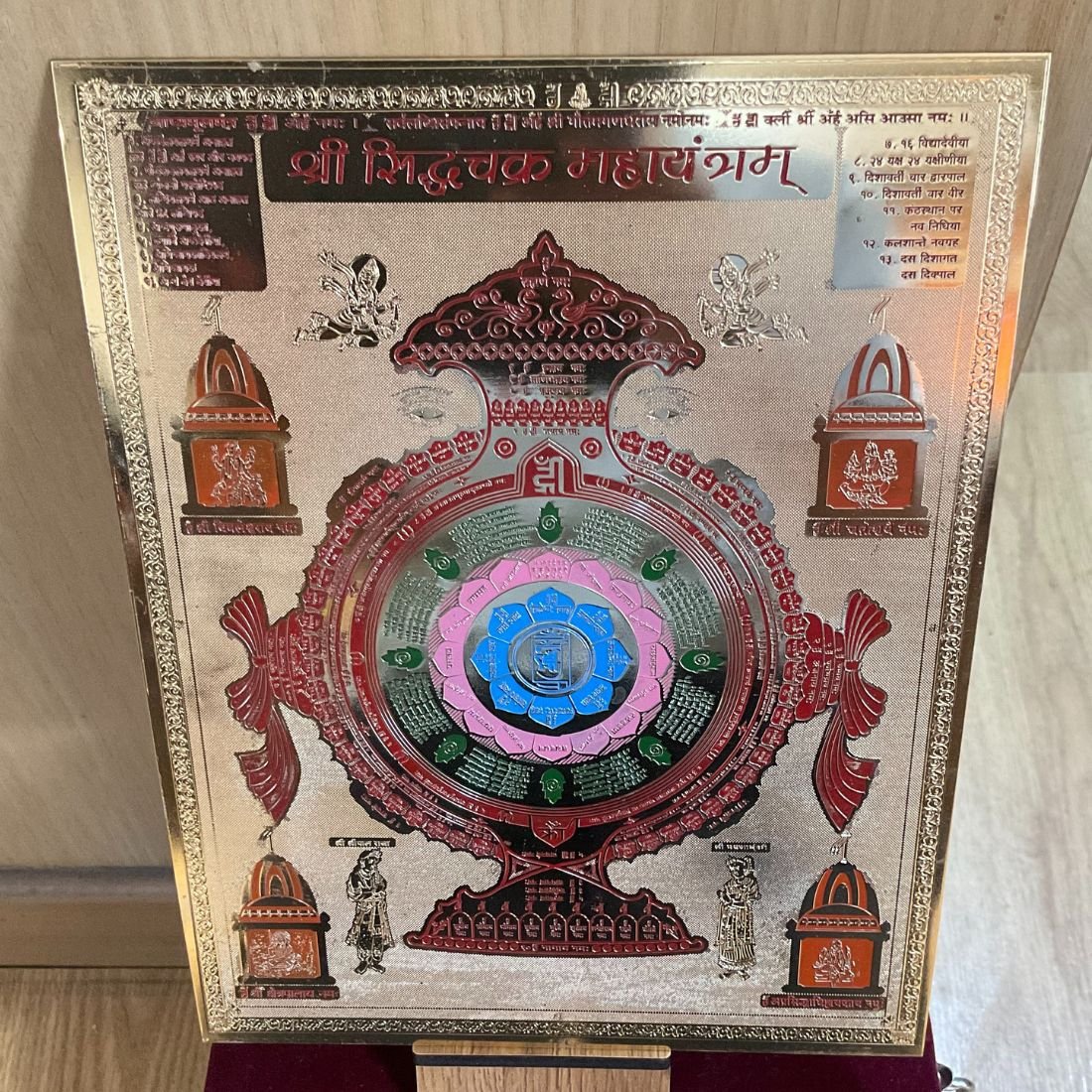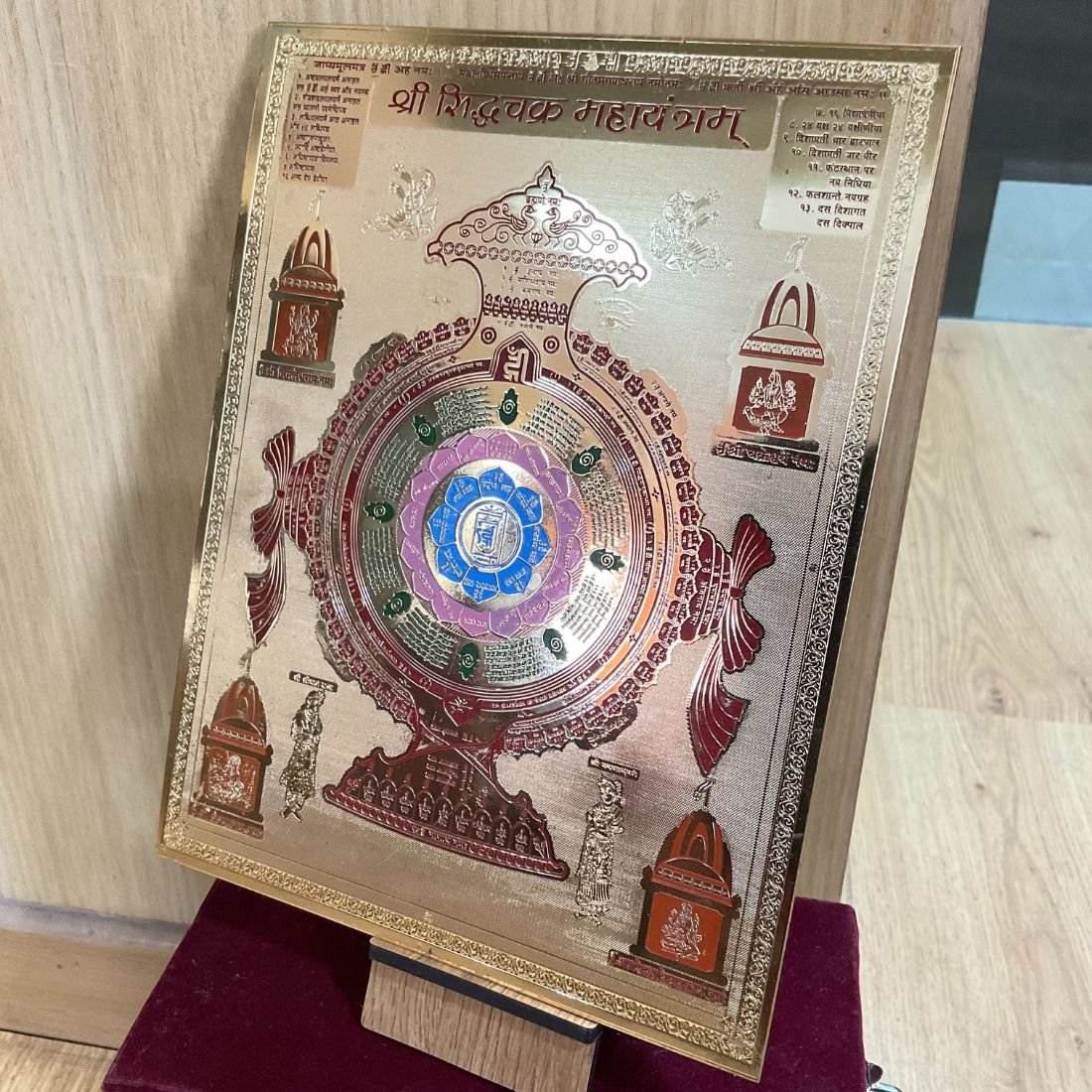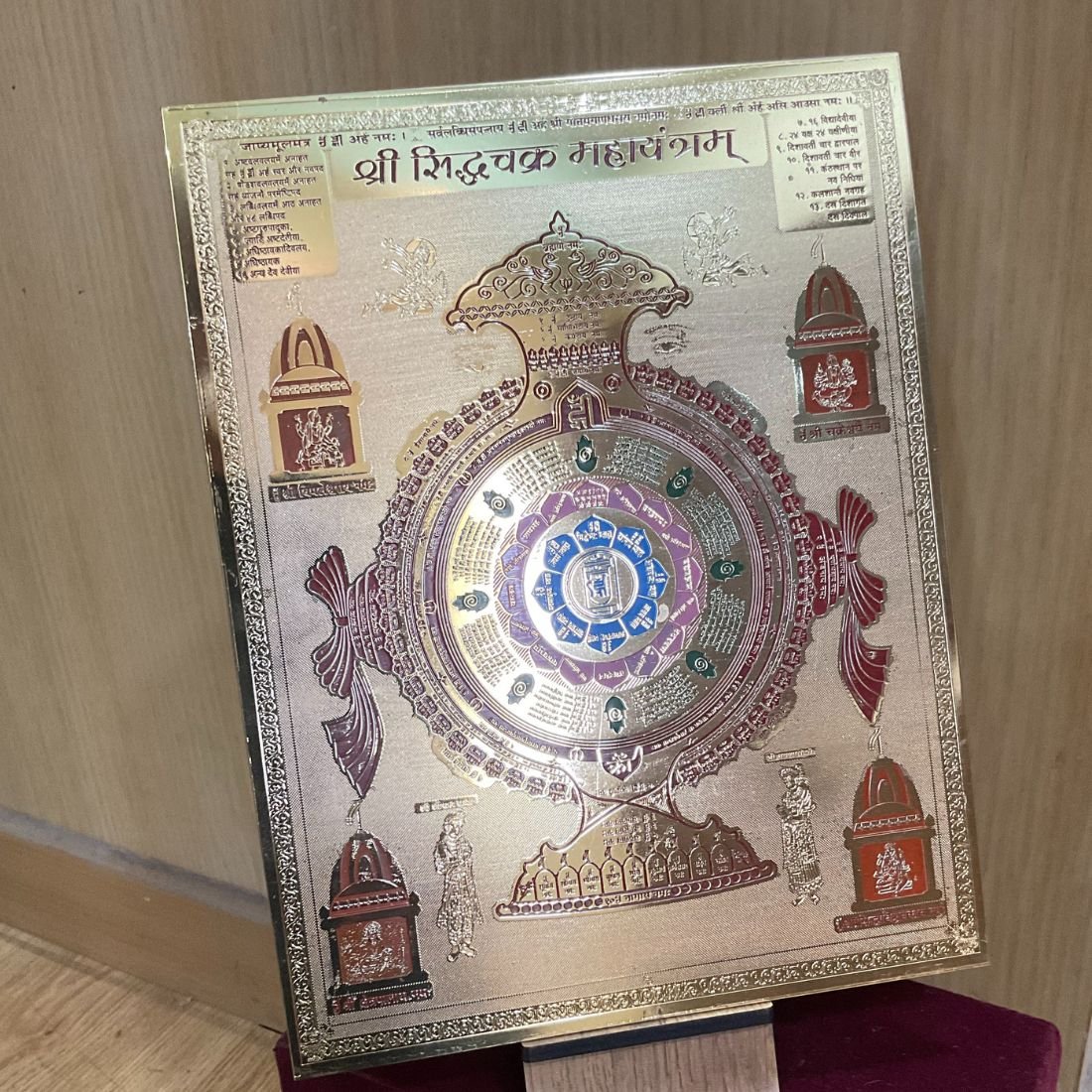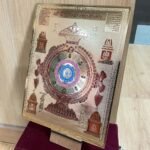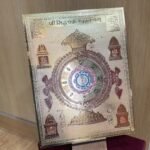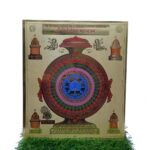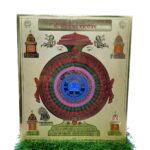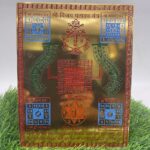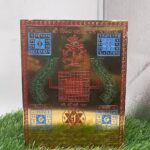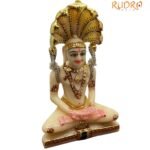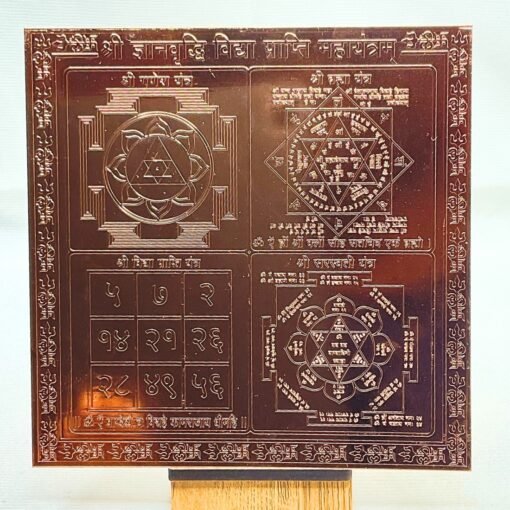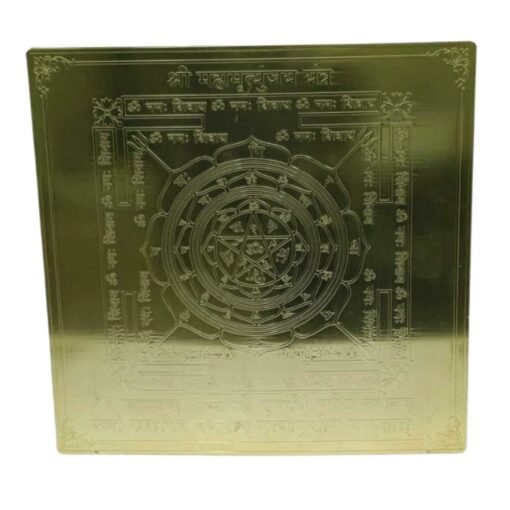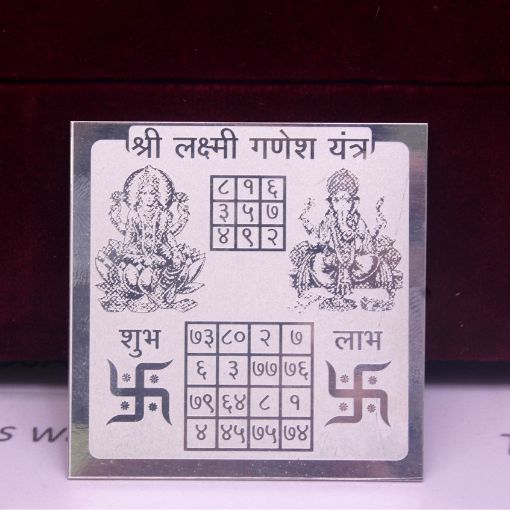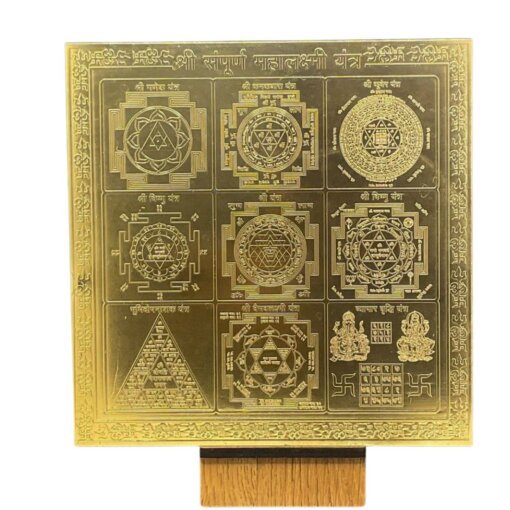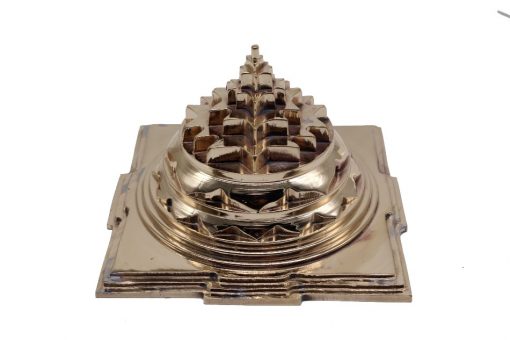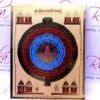Get 3% Discount on Prepaid Orders
Siddhachakra yantra Colour Gold Plated ( 7″ by 9″)
- Siddhachakra Poojan is the oldest and king of all the Poojas.
- The Siddhachakra Yantra is the most auspicious and versatile mystical diagram in the Jain religion
- Size – 7 by 9 inch
- Made of Pure brass with heavy gauge thickness with Gold plating and color filled
What Our Customers Are Saying
About Siddhachakra Yantra
- Siddha refers to a liberated soul, while chakra means a wheel. It is believed that worshiping Siddhachakra Yantra results in freedom from the cycles of life within a universal ‘wheel’ known as nirvana.
- Siddhachakra yantra is a popular Jain yantra or mandala (mystical diagram) used for worship in Jainism. It is also known as Navapada in the Svatambara tradition and Navadevta in the Digambar tradition. In the Svetambara tradition, it is associated with the Namokar Mantra.
- It is related to the legend of King Shripala and his wife Mayanasundari. It is depicted as a Kalasha with the core of a blossomed lotus representing Navapada in the center surrounded by guarding deities on petals. It is used in some rituals.
Benefits of SiddhaChakra Yantra
- The rationale behind performing this pooja (worship) is usually to gain either intense happiness or good physical health alongside the karmic benefits of performing any Jain pooja. Both of these efficiencies are chartered by the King Shripal and Queen Mayanasundri story.
- The Yantra depicts the whole Jain Dharma, the principal nine elements (Nav Pad), and the protective deities. The main section is in the form of an auspicious pitcher (Kalash).
- It has two main components. the first is the core, Nav Pad, which consists of circles 1 and 3, and represents the standard (stand-alone) Siddhachakra, which is commonly used in poojas.
- The second main component is the protective rings of deities. The focus on these protectors makes the worldly benefits of the Siddhachakra more understandable and attractive. Arihant Prabhu ni agnya Virudh Kai kehavayu hoi to man, vachan, Kaya thi Micchami Dukkaddam.
-
Promotes Liberation (Moksha):
-
The Yantra represents the path to liberation as taught in Jainism. Meditating on it helps internalize Jain values like non-violence, truth, and detachment.
-
-
Connection with Panch Parmeshthi:
-
The Yantra centralizes the Panch Parmeshthi (Arihant, Siddha, Acharya, Upadhyaya, Sadhu), invoking their blessings for spiritual progress.
-
-
Strengthens Faith (Shraddha):
-
Regular worship deepens faith in Jain doctrine and fosters devotion (Bhakti) toward enlightened beings.
-
-
Mental Purification:
-
Chanting associated mantras (e.g., Namokar Mantra) with the Yantra purifies thoughts and aligns the mind with higher values.
-
-
Calmness and Focus:
-
Meditating on the Yantra’s symmetrical structure promotes mental clarity and inner peace.
-
-
Reduces Stress and Anxiety:
-
The spiritual vibrations and focus help reduce negative emotions like fear, anger, and attachment.
-
-
Inspires Detachment (Vairagya):
-
Reflecting on the Yantra’s symbols encourages letting go of material obsessions, leading to a lighter, freer mind.
-
Benefits of SiddhaChakra Yantra In Hindi / ( सिद्धचक्र यंत्र के लाभ हिंदी में )
यह पूजा (सिद्धचक्र यंत्र पूजा) करने का मुख्य उद्देश्य या तो तीव्र सुख की प्राप्ति होता है या फिर अच्छे शारीरिक स्वास्थ्य की कामना के साथ-साथ, किसी भी जैन पूजा के समान इससे मिलने वाले कर्मों के शुभ फल भी प्राप्त होते हैं। इन दोनों लाभों की पुष्टि श्रेणिक राजा और रानी मयणासुंदरी की कथा से होती है।
सिद्धचक्र यंत्र सम्पूर्ण जैन धर्म का प्रतीक है। यह यंत्र नव तत्व (नव पद) और रक्षण करने वाले देव-देवियों को दर्शाता है। इसका मुख्य भाग एक शुभ कलश के आकार में होता है।
यंत्र के दो प्रमुख भाग होते हैं:
-
मुख्य केन्द्र – यह नव पद का प्रतिनिधित्व करता है (वृत्त 1 और 3) और स्वतंत्र रूप से प्रयुक्त होने वाले सामान्य सिद्धचक्र के समान है, जिसे अनेक पूजाओं में प्रयोग किया जाता है।
-
रक्षक देवों की परिधियाँ – ये रक्षक यंत्र के लौकिक लाभों को स्पष्ट और आकर्षक बनाती हैं। इन देवों का ध्यान करने से व्यक्ति के भौतिक और मानसिक जीवन में सकारात्मक प्रभाव आता है।
“अरिहंत प्रभु की आज्ञा के विरुद्ध मन, वचन, और काया से कुछ हुआ हो तो मैं ‘मिच्छामी दुक्कड़म्’ कहता हूँ।”
सिद्धचक्र यंत्र पूजन के लाभ:
1. मोक्ष की ओर प्रेरणा (Promotes Liberation – मोक्ष):
यह यंत्र जैन धर्म द्वारा बताए गए मोक्ष मार्ग का प्रतीक है। इस पर ध्यान करने से अहिंसा, सत्य, अपरिग्रह जैसे मूल्यों को आत्मसात करने में सहायता मिलती है।
2. पंच परमेष्ठी से संबंध (Connection with Panch Parmeshthi):
यंत्र का केन्द्र पंच परमेष्ठी (अरिहंत, सिद्ध, आचार्य, उपाध्याय, साधु) को समर्पित होता है। उनकी कृपा से साधक को आत्मिक उन्नति का मार्ग प्राप्त होता है।
3. श्रद्धा और भक्ति में वृद्धि (Strengthens Faith and Devotion):
नियमित पूजन और साधना से जैन धर्म में विश्वास दृढ़ होता है और भक्ति भावना बढ़ती है।
4. मानसिक शुद्धि (Mental Purification):
इस यंत्र के साथ नमोकार मंत्र और अन्य शुद्ध मंत्रों का जाप करने से विचारों की शुद्धि होती है और आत्मा उच्च मूल्यों से जुड़ती है।
5. शांति और एकाग्रता (Calmness and Focus):
यंत्र की सममित संरचना पर ध्यान केंद्रित करने से मानसिक स्पष्टता और आंतरिक शांति प्राप्त होती है।
6. तनाव और चिंता में कमी (Reduces Stress and Anxiety):
इस पूजा के आध्यात्मिक प्रभाव और ध्यान की प्रक्रिया से भय, क्रोध, मोह जैसे नकारात्मक भावों में कमी आती है।
7. वैराग्य की भावना (Inspires Detachment):
यंत्र के प्रतीकों पर मनन करने से भौतिक वस्तुओं के प्रति आसक्ति कम होती है और मन हल्का व मुक्त अनुभव करता है।
यदि आप चाहें तो मैं इस पूजा की विधि, मंत्र या यंत्र की संरचना का विवरण भी दे सकता हूँ।
How To Worship SiddhaChakra Yantra / ( सिद्धचक्र यंत्र की पूजा कैसे करें )
1. Preparation Before Worship
-
Cleanliness: Take a bath and wear clean (preferably white) clothes.
-
Clean the Worship Space: Use a clean cloth and, if possible, a sacred cloth (asan) to place the Yantra on.
-
Place the Yantra: Put the Siddhachakra Yantra on a raised platform or puja chowki.
-
Set Up Offerings: Prepare offerings like rice, flowers, sandalwood paste (chandan), saffron, incense (agarbatti), lamp (diya), and navpad pujan samagri.
2. Invocation and Prayers
Start with reciting Navkar Mantra 3, 9, or 108 times to purify the mind and surroundings.
3. Worship Each Element of Siddhachakra (Navpad)
The Siddhachakra consists of 9 principal entities, arranged in a symbolic circular pattern:
| Order | Name | Meaning | Puja Offering |
|---|---|---|---|
| 1 | Arihant | Enlightened souls | Flower |
| 2 | Siddha | Liberated souls | Saffron |
| 3 | Acharya | Spiritual leaders | Rice |
| 4 | Upadhyaya | Teachers of scriptures | Sandalwood |
| 5 | Sadhu | Monks and ascetics | Coconut |
| 6 | Samyak Darshan | Right Faith | Incense |
| 7 | Samyak Gyan | Right Knowledge | Fruit |
| 8 | Samyak Charitra | Right Conduct | Betel nuts |
| 9 | Samyak Tapasya | Right Austerity | Lamp (Diya) |
You can chant a small mantra or reflect silently on the meaning of each as you offer.
4. Arti and Bhakti
-
Perform Arti with a ghee lamp while chanting devotional songs (e.g., “Arihant Vandana” or “Siddhachakra Stavan”).
-
Ring the bell if customary in your tradition.
5. Prayers and Reflection
-
Offer your prayers, asking for spiritual upliftment, removal of karma, and inner peace.
-
Meditate on the Navpad values: Right Faith, Knowledge, and Conduct.
6. Conclude the Ritual
-
Do Chaitya Vandan (if you’re trained in it).
-
Offer prasadam (fruits, dry fruits, or sweets) if you prepared it.
-
If part of a specific puja like Ayambil Oli, perform the fast or rituals accordingly.
| Weight | .500 kg |
|---|
Q & A
FAQS
Yes — Rudrapuja guarantees authenticity and offers XRAY-certified Rudraksha beads, ensuring that each product is genuine and lab-validated.
Absolutely! We provide fast international shipping, with delivery typically within 5–12 business days after dispatch.
Yes — We offer Cash on Delivery across India, along with free shipping options.
You have 10 days from the date of delivery to return an item, provided it’s unused and in its original condition.
We strictly deal only in genuine products, and each Rudraksha is lab-certified to maintain the highest standards.
Visit our dedicated FAQ page for detailed answers on selecting Rudraksha beads, their benefits, meditation usage, and more.
You can reach us via WhatsApp, phone, or email. Details are available on our "Contact Us" page and site header.
At Rudrapuja, we promise 100% genuine products with an authenticity certificate. We source every Rudraksha bead to ensure freshness and purity. Our Vedic Yantras are crafted strictly as per the Puranas. We focus on understanding customer needs, solving their challenges, and offering authentic quality at the best price.

